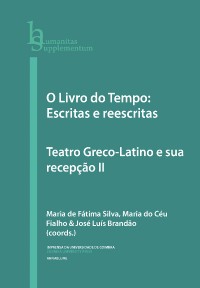Please use this identifier to cite or link to this item:
https://hdl.handle.net/10316.2/40922| Title: | Orestes en Palermo: El Reñidero de Sergio De Cecco: versión del mito en el contexto cultural de la Argentina del siglo XX | Other Titles: | Orestes at Palermo: El Reñidero by Sergio De Cecco: a version of this myth in the cultural context of 19th Argentina | Authors: | Galán, Lía | Keywords: | De Cecco;Electra;Orestes;Palermo;tragedy;De Cecco;Electra;Orestes;Palermo;tragedia | Issue Date: | 2016 | Publisher: | Imprensa da Universidade de Coimbra Annablume |
Journal: | http://hdl.handle.net/10316.2/40906 | Abstract: | El Reñidero of Sergio De Cecco offers a new version of the myth of
Orestes as avenging the murder of his father, adapted to the Argentine sociocultural
context. De Cecco’s version sets the action in 1905 in the Palermo area as the boundary
between town and country, which had not entered the European immigration. It
has the characteristic of a small state, a kingdom with its own laws and ethics of thugs
and a primitive cult of courage, which resolves “pure dagger and blood”. The kingdom
of Argos, the suburb of Palermo and the “reñidero” correspond to be fighting and
death scenarios. Men are fighting cocks disputing the power and the female. In addition
“El Reñidero” shows Freudians psychoanalytical principles that the writers of the
time are incorporated. The characters are analyzed: Nelida (Clytemnestra) - Santiago
Soriano (Aegisthus) - Elena (Electra) - Orestes, the one that preserves the Greek
name, Pancho Morales (Agamemnon). Beyond the express affiliation to the same De
Cecco says (Sophocles’ Electra), the work is marked by a whole tragic tradition that
refers to Shakespeare and the current “new realists” of the 60s. El Reñidero de Sergio De Cecco ofrece una nueva versión del mito de Orestes como vengador del asesinato de su padre, adaptada al contexto sociocultural argentino. La versión de De Cecco sitúa la acción en 1905, en el barrio de Palermo como zona límite entre campo y ciudad, en la que no había ingresado la inmigración europea. Tiene la característica de un pequeño estado, un reino con leyes propias y una ética de matones y un culto primitivo al coraje, que se resuelve “a daga y sangre”. El reino de Argos, el arrabal de Palermo y el reñidero se corresponden por ser escenarios de pelea y muerte. Los hombres son gallos de riña disputando el poder y la hembra. En El Reñidero se incorporan además principios psicoanalíticos freudianos a los que adherían los escritores de la época. Se analizan los personajes: Pancho Morales (Agamenón) – Nélida (Clitemnestra) – Santiago Soriano (Egisto) - Elena (Electra) - Orestes, único que conserva el nombre griego. Más allá de la expresa filiación que el mismo De Cecco declara (Electra de Sófocles), la obra está marcada por toda una tradición trágica que remite a Shakespeare y a la corriente de los “nuevos realistas” de la década del 60. |
URI: | https://hdl.handle.net/10316.2/40922 | ISBN: | 978-989-26-1297-3 978-989-26-1298-0 (PDF) |
DOI: | 10.14195/978-989-26-1298-0_16 | Rights: | open access |
| Appears in Collections: | O livro do tempo: escritas e reescritas: teatro greco-latino e sua recepção II |
Files in This Item:
| File | Description | Size | Format | |
|---|---|---|---|---|
| orestes_en_palermo_el_ren_idero_de_sergio_de_cecco._versio_n_del_mito_en_el_contexto_cultural_de_la_argentina_del_siglo_xx.pdf | 610.77 kB | Adobe PDF |  |
Items in DSpace are protected by copyright, with all rights reserved, unless otherwise indicated.
